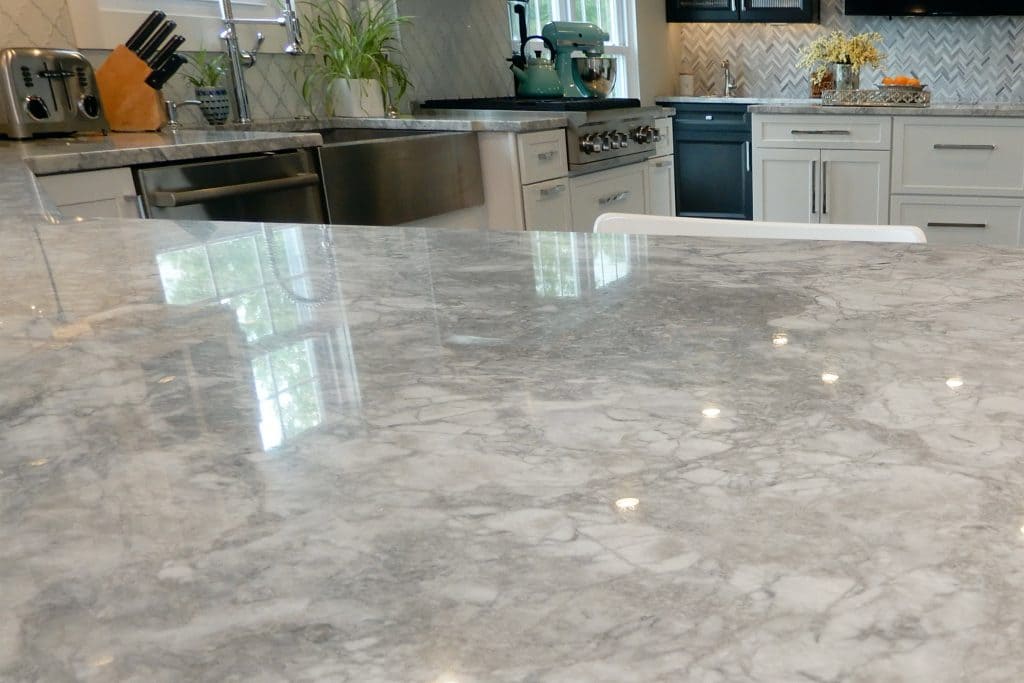When it comes to choosing the perfect countertop material for your kitchen or bathroom, the options can be overwhelming. One material that has gained significant popularity is dolomite. In this comprehensive guide, we will explore the pros and cons of dolomite countertops, helping you make an informed decision for your home.
What is Dolomite?
Dolomite is a sedimentary rock composed primarily of calcium magnesium carbonate. It shares many characteristics with marble and limestone, making it a popular choice for countertops. Dolomite is available in a range of colors and patterns, often featuring stunning veining and crystal formations.
Pros of Dolomite Countertops
1. Aesthetic Appeal
Dolomite countertops are renowned for their elegant appearance. The stone’s natural beauty, with its subtle veining and unique patterns, can enhance the visual appeal of any kitchen or bathroom. Dolomite offers a timeless look that can complement both traditional and contemporary design styles.
2. Durability
One of the key advantages of dolomite is its durability. It is harder than marble, making it more resistant to scratches and etching. This makes dolomite a suitable choice for high-traffic areas such as kitchen countertops, where durability is essential.
3. Heat Resistance
Dolomite is known for its heat resistance, which means you can place hot pots and pans directly on the surface without worrying about damage. This feature makes dolomite an excellent choice for busy kitchens where cooking and baking are frequent activities.
4. Low Maintenance
Dolomite countertops are relatively low maintenance compared to other natural stones. With proper sealing, dolomite surfaces can resist stains and moisture penetration. Regular cleaning with mild soap and water is usually sufficient to keep dolomite countertops looking pristine.
5. Affordability
Compared to other natural stone options like granite and quartzite, dolomite is often more affordable. This cost-effectiveness allows homeowners to achieve a high-end look without breaking the bank.
Cons of Dolomite Countertops
1. Porosity
Despite its durability, dolomite is still a porous material. This means it can absorb liquids and stains if not properly sealed. Regular resealing is necessary to maintain the stone’s appearance and prevent damage from spills and moisture.
2. Sensitivity to Acidic Substances
Dolomite is sensitive to acidic substances such as vinegar, citrus juices, and certain cleaning agents. These acids can cause etching and dull the surface over time. It’s important to use pH-neutral cleaners and avoid placing acidic foods directly on the countertop.
3. Limited Color Options
While dolomite offers a range of beautiful patterns and veining, the color palette is somewhat limited compared to other natural stones. Homeowners looking for a specific color scheme may find fewer options with dolomite.
4. Potential for Cracking
Although dolomite is more durable than marble, it is not as tough as granite or quartzite. Heavy impacts or excessive weight on the surface can cause cracking or chipping. Proper care and caution are required to avoid such damage.
5. Regular Maintenance Required
To keep dolomite countertops in optimal condition, regular maintenance is necessary. This includes periodic resealing and careful cleaning to avoid etching and staining. Homeowners must be committed to maintaining their countertops to preserve their beauty and functionality.
Comparison with Other Natural Stones
Dolomite vs. Marble
Dolomite and marble are often compared due to their similar appearance. However, dolomite is generally more durable and resistant to scratching and etching than marble. While both stones require sealing, dolomite’s greater hardness gives it an edge in terms of longevity and maintenance.
Dolomite vs. Granite
Granite is one of the toughest natural stones, making it more resistant to scratches and heat compared to dolomite. However, dolomite offers a more unique and elegant appearance with its distinct veining and patterns. Homeowners looking for a balance between beauty and durability may prefer dolomite.
Dolomite vs. Quartzite
Quartzite is harder than dolomite and offers superior resistance to scratches and heat. However, dolomite provides a more affordable option with a similar luxurious look. Both stones require regular sealing and maintenance to prevent staining and etching.
Installation and Maintenance Tips
Installation
Proper installation is crucial to ensure the longevity and performance of dolomite countertops. It is recommended to hire a professional installer with experience in working with natural stone. The installer will ensure that the countertops are correctly cut, sealed, and fitted to prevent future issues.
Maintenance
To maintain the beauty and functionality of dolomite countertops, follow these maintenance tips:
- Sealing: Regularly seal your dolomite countertops to protect against stains and moisture. The frequency of resealing depends on the stone’s porosity and the manufacturer’s recommendations.
- Cleaning: Use a pH-neutral cleaner and a soft cloth to clean the surface. Avoid abrasive scrubbers and acidic cleaners that can cause etching.
- Spill Management: Wipe up spills immediately to prevent staining. Pay special attention to acidic substances that can damage the surface.
- Heat Protection: While dolomite is heat-resistant, it’s still a good practice to use trivets or hot pads under hot pots and pans to avoid thermal shock.
Conclusion
Dolomite countertops offer a stunning and durable option for homeowners seeking a balance between beauty and functionality. With proper care and maintenance, dolomite can provide a luxurious and timeless look to any kitchen or bathroom. However, it is important to consider its porosity and sensitivity to acids when making your decision.


